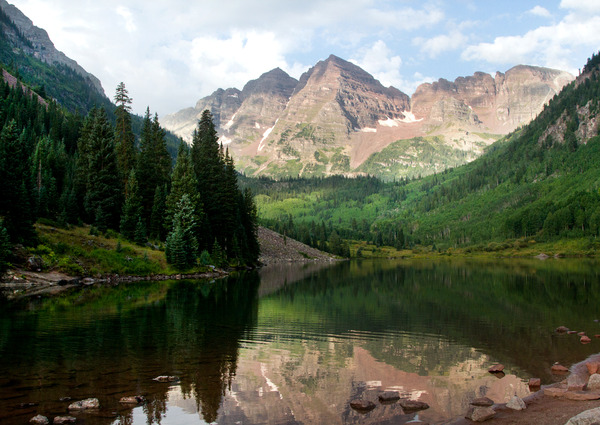The Local newsletter is your free, daily guide to life in Colorado. For locals, by locals.
The breathtaking view of the Maroon Bells, the twin claret-colored peaks whose dramatic, snow-capped profiles are reflected in the glistening waters of a peaceful alpine lake, is widely considered Colorado’s most-photographed scene. And it’s easy to see why.
Maroon and North Maroon peaks, the centerpieces of the 181,535-acre Maroon Bells-Snowmass Wilderness, are two of Colorado’s famous fourteeners. But unlike most of our fourteeners (and many lower peaks) that are composed of hard granite and metamorphic rocks, the Maroon Bells are made of a soft, crumbly rock called mudstone.

The weak nature of this stone makes tackling the peaks tough for climbers, who must negotiate steep, unstable slopes to stand atop what the U.S. Forest Service, which manages this land, once dubbed “The Deadly Bells” after eight people tragically died on their slopes in 1965.
So why are the Maroon Bells so different than Colorado’s other mountains? Their soft stone, distinctive color, and layered appearance are all due to the rock’s humble origins as a thick pile of sediment shed off an ancient mountain chain, known as the Ancestral Rockies, around 300 million years ago. Just as today’s Rockies are comprised of multiple branches like the Sawatch, the Front Range, and the Elk mountains, the ancient Colorado Rockies consisted of two north–south trending ranges.
As these twin ranges rose, erosion quickly began to tear them apart, ultimately creating a thick apron of layer upon layer of sediment encircling their flanks. A particularly impressive pile of gravel, sand, and mud—more than 10,000 feet thick—accumulated in the basin between the two ancestral ranges. Over millions of years, tremendous pressure and fluids circulating through this pile cemented the countless sediment grains into coarser rocks near the mountain front and finer-grained mudstone farther out in the basin. Iron-rich minerals in the pile also rusted, creating the rock’s distinctive red hue.
The mudstone remained buried until the modern Rockies were raised, uplifting and exposing the banded maroon rock. A couple million years ago, when the Earth’s climate cooled, brawny glaciers flowed down the valleys, sculpting the soft mudstone into Colorado’s gorgeous, though sometimes dangerous, signature peaks.
Terri Cook is a freelance writer and geologist based in Boulder, Colo. Follow her explorations across the state and around the globe @ColoTravelGal.
(Read more about the geological history of Colorado’s beautiful landscapes)








